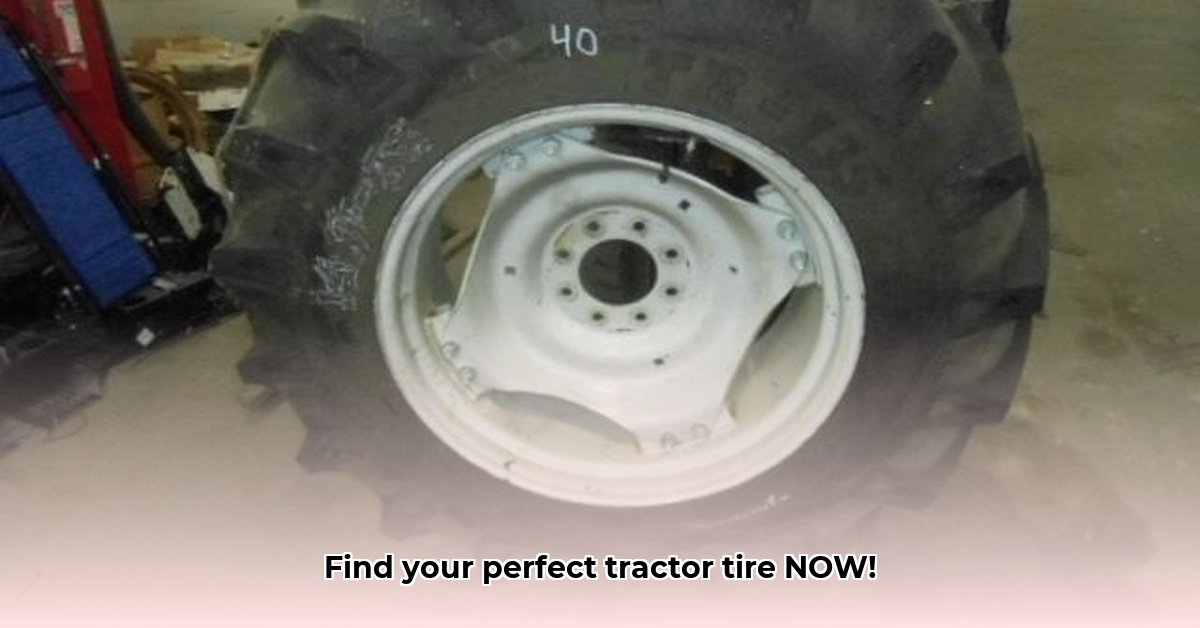
Finding the right 14.9 x 28 tractor tire can be surprisingly challenging. Prices vary wildly, and detailed technical specifications are often hard to come by. This comprehensive guide navigates the complexities, providing a step-by-step approach to selecting the perfect tire for your needs and budget. For additional tire-related resources, check out this helpful website.
Navigating the 14.9 x 28 Tractor Tire Market
The market for 14.9 x 28 tractor tires is characterized by significant price fluctuations and a lack of readily available, consistent technical data. You'll find a wide range of prices, from budget-friendly options to premium choices. However, comparing tires based on detailed specifications can be difficult due to inconsistent information across brands and retailers. Many online listings rely on vague "easy test scores," offering limited insight into the true performance capabilities of each tire. This lack of transparency makes informed decision-making a significant challenge. Isn't it frustrating to try and compare products without knowing the full picture?
Choosing Your Perfect 14.9 x 28 Tires: A Step-by-Step Guide
Selecting the right 14.9 x 28 tractor tire requires a systematic approach. Follow these steps to ensure you make the most informed decision:
Step 1: Define Your Needs (Critical First Step!)
Before comparing prices or specs, assess your specific requirements:
- Soil Type: Heavy clay, sandy loam, or rocky terrain demand different tire characteristics. Clay soils need aggressive treads for better grip, while sandy soils might prioritize puncture resistance.
- Usage Intensity: How many hours per year will you operate your tractor? High-intensity use necessitates more durable tires.
- Budget: Establish a realistic budget to guide your choices. Remember, the cheapest tire isn't always the most cost-effective in the long run.
Step 2: Leverage Available Data (Information Gathering)
Utilize all available resources to gather information:
- "Easy Test Scores": While limited, use these as a general guideline.
- Online Reviews: Read user reviews to get a sense of real-world performance, noting variations in opinions based on soil type and usage.
- Direct Contact with Suppliers: This is crucial. Reach out to multiple tire suppliers directly to request detailed technical specifications not readily available online. Don’t hesitate to ask specific questions about load capacity, ply rating, and tread depth.
Step 3: Prioritize Key Features (Focus on the Essentials)
Even with limited data, prioritize these crucial features:
- Load Capacity: The tire must safely handle your tractor's weight and any additional loads. Underestimating this can lead to tire failure.
- Tread Depth and Pattern: Deeper treads and aggressive patterns provide better traction in challenging conditions like mud or wet soil. Smoother patterns may be more appropriate for hard-packed soils.
- Ply Rating: This indicates the tire's strength and durability. A higher ply rating generally equates to a stronger, longer-lasting tire.
Step 4: Compare Pricing and Value (Long-Term Perspective)
Don't focus solely on the initial price. Consider the total cost of ownership:
- Cost Per Hour of Operation: Calculate the cost per hour based on the tire's expected lifespan and your typical operating hours. A higher upfront cost might result in lower costs per operating hour.
- Downtime Costs: Premature tire failure leads to lost productivity, potentially outweighing a small price difference between tires. Isn't avoiding downtime worth a bit extra?
Understanding Tire Specifications: A Quick Glossary
Understanding these terms will significantly improve your decision-making process:
- Ply Rating: Indicates the number of layers of rubber-coated fabric in the tire's sidewall (higher is stronger).
- Load Index: A number signifying the maximum weight the tire can carry at a specified inflation pressure.
- UTQG (Uniform Tire Quality Grading): A US system rating treadwear, traction, and temperature resistance (consider it a starting point).
Long-Term Tire Management: Maximizing Lifespan and Minimizing Downtime
Proper maintenance is crucial for maximizing the lifespan of your tires:
- Regular Pressure Checks: Maintain proper inflation pressure for optimal performance and to prevent uneven wear.
- Tire Rotation: Rotate tires regularly to ensure even wear across all tires, significantly extending their lifespan.
Conclusion: Making the Right Choice
Choosing the right 14.9 x 28 tractor tire requires careful consideration of your specific needs, thorough research, and a focus on long-term value. By following these steps and prioritizing key features, you'll be equipped to make a sound investment that keeps your operation running smoothly and efficiently for years to come. Remember to contact suppliers directly – they are a wealth of often-unavailable information!